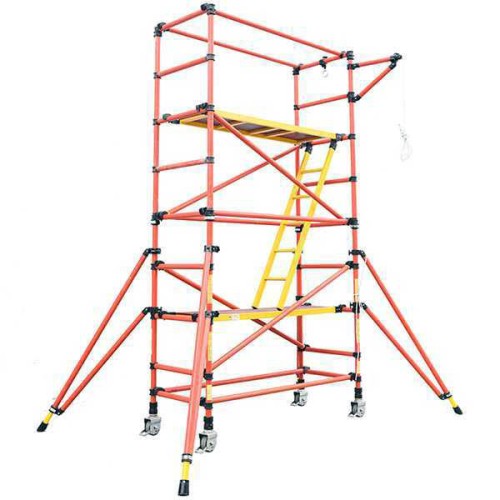Fiberglass Scaffolding: The Ultimate Solution for Safe and Durable Construction
Fiberglass scaffolding, also known as FRP scaffolding or composite scaffolding, has become a cornerstone in modern construction and industrial projects. Renowned for its non-conductive properties and lightweight design, this scaffolding type outperforms traditional materials like steel or aluminum in high-risk environments. Below, we explore its manufacturing, applications, and advantages to help you make informed decisions.
What Is Fiberglass Scaffolding?
Fiberglass scaffolding is a structural system crafted from fiber-reinforced plastic (FRP), combining glass fibers with polymer resins. Unlike metal alternatives, it’s inherently electrical-safe, making it ideal for projects near live wires or power sources. Common synonyms include dielectric scaffolding, non-metallic scaffolding, and composite scaffold systems.
Manufacturing Process and Material Integrity
The production of FRP scaffolding involves pultrusion, a method that layers fiberglass strands with epoxy or polyester resin. This creates a rigid, corrosion-resistant scaffold structure capable of withstanding harsh weather, chemicals, and UV exposure. The result? A lightweight scaffolding system that retains strength while minimizing worker fatigue.
Classification and Specifications
Fiberglass scaffolding systems vary by design:
- Single-pole scaffold towers for narrow workspaces.
- Mobile scaffold platforms with lockable wheels.
- Modular scaffolding for customizable configurations.
Standard specifications include load capacities up to 500 lbs per platform and heights adjustable from 6 to 40 feet.
Key Applications of Non-Conductive Scaffolding
Electrical-safe scaffolding is indispensable in:
- Power plants and substations.
- Telecommunication tower maintenance.
- Bridge painting and chemical processing facilities.
Its dielectric properties ensure zero electrical conductivity, protecting workers in high-voltage zones.
Fiberglass vs. Steel vs. Aluminum
While steel scaffolding offers high load-bearing capacity, it’s prone to rust and conducts electricity. Aluminum is lighter but lacks dielectric strength. Fiber-reinforced plastic scaffolding strikes a balance:
- 50% lighter than steel, reducing transport costs.
- Zero corrosion, ideal for marine or chemical environments.
- OSHA-compliant for electrical safety (up to 300kV).
Installation and Safety Guidelines
Installing FRP scaffold systems follows principles similar to metal scaffolding but with critical differences:
- Use fiberglass-specific clamps to avoid material stress.
- Inspect for UV degradation if used outdoors long-term.
- Pair with non-conductive scaffold boards for full dielectric protection.
Always adhere to EN 12811 and OSHA standards for load distribution and fall prevention.
Why Choose Fiberglass Scaffolding?
From its corrosion-resistant scaffold framework to unmatched electrical safety, fiberglass scaffolding is a future-proof investment. Whether you need lightweight scaffold towers for quick assembly or heavy-duty platforms for industrial use, this material delivers reliability and compliance.

